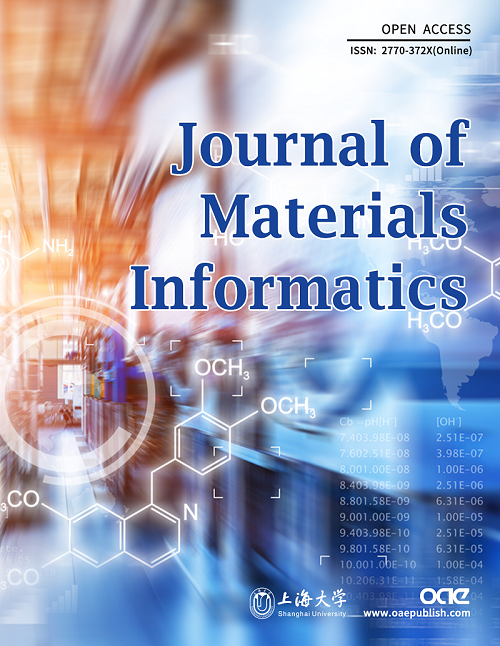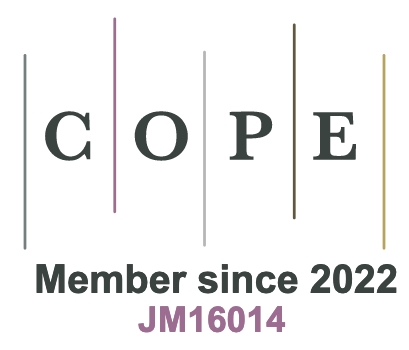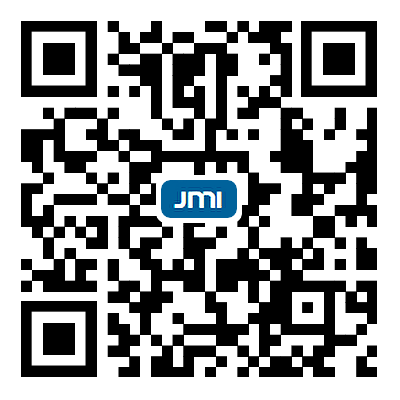REFERENCES
1. Bellani, S.; Bartolotta, A.; Agresti, A.; et al. Solution-processed two-dimensional materials for next-generation photovoltaics. Chem. Soc. Rev. 2021, 50, 11870-965.
2. Liu, Y.; Li, Y.; Wu, Y.; et al. High-efficiency silicon heterojunction solar cells: materials, devices and applications. Mater. Sci. Eng. R. Rep. 2020, 142, 100579.
3. Lu, T.; Li, M.; Lu, W.; Zhang, T. Recent progress in the data-driven discovery of novel photovoltaic materials. J. Mater. Inf. 2022, 2, 7.
4. Younis, A.; Lin, C. H.; Guan, X.; et al. Halide perovskites: a new era of solution-processed electronics. Adv. Mater. 2021, 33, 2005000.
5. Huang, Y.; Liu, T.; Li, D.; et al. Limitations and solutions for achieving high-performance perovskite tandem photovoltaics. Nano. Energy. 2021, 88, 106219.
6. Kim, Y. H.; Park, J.; Kim, S.; et al. Exploiting the full advantages of colloidal perovskite nanocrystals for large-area efficient light-emitting diodes. Nat. Nanotechnol. 2022, 17, 590-7.
7. Wen, J.; Rong, K.; Jiang, L.; et al. Copper-based perovskites and perovskite-like halides: a review from the perspective of molecular level. Nano. Energy. 2024, 128, 109802.
8. Green, M. A.; Dunlop, E. D.; Yoshita, M.; et al. Solar cell efficiency tables (Version 64). Prog. Photovolt. 2024, 32, 425-41.
9. Zhang, C.; Wei, K.; Hu, J.; et al. A review on organic hole transport materials for perovskite solar cells: structure, composition and reliability. Mater. Today. 2023, 67, 518-47.
10. Kim, G.; Choi, H.; Kim, M.; Lee, J.; Son, S. Y.; Park, T. Hole transport materials in conventional structural (n–i–p) perovskite solar cells: from past to the future. Adv. Energy. Mater. 2020, 10, 1903403.
11. Sun, Q.; Sadhu, A.; Lie, S.; Wong, L. H. Critical review of Cu-based hole transport materials for perovskite solar cells: from theoretical insights to experimental validation. Adv. Mater. 2024, 36, e2402412.
12. Li, M.; Qiu, F.; Wang, S.; Jiang, Y.; Hu, J. Hole transporting materials in inorganic CsPbI3-xBrx solar cells: fundamentals, criteria and opportunities. Mater. Today. 2022, 52, 250-68.
13. Yin, X.; Song, Z.; Li, Z.; Tang, W. Toward ideal hole transport materials: a review on recent progress in dopant-free hole transport materials for fabricating efficient and stable perovskite solar cells. Energy. Environ. Sci. 2020, 13, 4057-86.
14. Kim, H. J.; Phenrat, T.; Tilton, R. D.; Lowry, G. V. Effect of kaolinite, silica fines and pH on transport of polymer-modified zero valent iron nano-particles in heterogeneous porous media. J. Colloid. Interface. Sci. 2012, 370, 1-10.
15. Chang, Q.; Yun, Y.; Cao, K.; et al. Highly efficient and stable perovskite solar modules based on FcPF6 engineered spiro-OMeTAD hole transporting layer. Adv. Mater. 2024, 36, 2406296.
16. Dong, Y.; Rombach, F. M.; Min, G.; et al. Dopant-induced interactions in spiro-OMeTAD: advancing hole transport for perovskite solar cells. Mater. Sci. Eng. R. Rep. 2025, 162, 100875.
17. Yang, H.; Shen, Y.; Zhang, R.; et al. Composition-conditioning agent for doped spiro-OMeTAD to realize highly efficient and stable perovskite solar cells. Adv. Energy. Mater. 2022, 12, 2202207.
18. Rombach, F. M.; Haque, S. A.; Macdonald, T. J. Lessons learned from spiro-OMeTAD and PTAA in perovskite solar cells. Energy. Environ. Sci. 2021, 14, 5161-90.
19. Khan, D.; Liu, X.; Qu, G.; Nath, A. R.; Xie, P.; Xu, Z. X. Nexuses between the chemical design and performance of small molecule dopant-free hole transporting materials in perovskite solar cells. Small 2023, 19, e2205926.
20. Guo, H.; Zhang, H.; Shen, C.; et al. A coplanar π-extended quinoxaline based hole-transporting material enabling over 21 % efficiency for dopant-free perovskite solar cells. Angew. Chem. Int. Ed. Engl. 2021, 60, 2674-9.
21. Yang, K.; Liao, Q.; Huang, J.; et al. Intramolecular noncovalent interaction-enabled dopant-free hole-transporting materials for high-performance inverted perovskite solar cells. Angew. Chem. Int. Ed. Engl. 2022, 61, 202113749.
22. Yu, X.; Gao, D.; Li, Z.; et al. Green-solvent processable dopant-free hole transporting materials for inverted perovskite solar cells. Angew. Chem. Int. Ed. Engl. 2023, 62, 202218752.
23. Jeong, M.; Choi, I. W.; Yim, K.; et al. Large-area perovskite solar cells employing spiro-Naph hole transport material. Nat. Photon. 2022, 16, 119-25.
24. Yu, W.; Yang, Q.; Zhang, J.; et al. Simple is best: a p-phenylene bridging methoxydiphenylamine-substituted carbazole hole transporter for high-performance perovskite solar cells. ACS. Appl. Mater. Interfaces. 2019, 11, 30065-71.
25. Qiu, J.; Liu, H.; Li, X.; Wang, S.; Zhang, F. Impact of 9-(4-methoxyphenyl) carbazole and benzodithiophene cores on performance and stability for perovskite solar cells based on dopant-free hole-transporting materials. Solar. RRL. 2019, 3, 1900202.
26. Liu, X.; Ding, X.; Ren, Y.; et al. A star-shaped carbazole-based hole-transporting material with triphenylamine side arms for perovskite solar cells. J. Mater. Chem. C. 2018, 6, 12912-8.
27. Zhang, F.; Liu, X.; Yi, C.; et al. Dopant-free donor (D)-π-D-π-D conjugated hole-transport materials for efficient and stable perovskite solar cells. ChemSusChem 2016, 9, 2578-85.
28. Zhang, R.; Rong, F.; Lai, G.; Wu, G.; Ye, Y.; Zheng, J. Machine learning descriptors for crystal materials: applications in Ni-rich layered cathode and lithium anode materials for high-energy-density lithium batteries. J. Mater. Inf. 2024, 4, 17.
29. Shi, Y.; Zhang, Y.; Wen, J.; et al. Interpretable machine learning for stability and electronic structure prediction of Janus III–VI van der Waals heterostructures. Mater. Genome. Eng. Adv. 2024, 2, e76.
30. Shang, Y.; Xiong, Z.; An, K.; Hauch, J. A.; Brabec, C. J.; Li, N. Materials genome engineering accelerates the research and development of organic and perovskite photovoltaics. Maters. Genome. Eng. Adv. 2024, 2, e28.
31. Gan, Y.; Miao, N.; Lan, P.; Zhou, J.; Elliott, S. R.; Sun, Z. Robust design of high-performance optoelectronic chalcogenide crystals from high-throughput computation. J. Am. Chem. Soc. 2022, 144, 5878-86.
32. Sa, B.; Hu, R.; Zheng, Z.; et al. High-throughput computational screening and machine learning modeling of Janus 2D III–VI van der Waals heterostructures for solar energy applications. Chem. Mater. 2022, 34, 6687-701.
33. Xu, J.; Chen, H.; Grater, L.; et al. Anion optimization for bifunctional surface passivation in perovskite solar cells. Nat. Mater. 2023, 22, 1507-14.
34. Zhang, B.; Zeng, H.; Yin, H.; et al. Combining component screening, machine learning and molecular engineering for the design of high-performance inverted perovskite solar cells. Energy. Environ. Sci. 2024, 17, 5532-41.
35. Wang, X.; Wang, M.; Zhang, Z.; et al. De novo design of spiro-type hole-transporting material: anisotropic regulation toward efficient and stable perovskite solar cells. Research 2024, 7, 0332.
36. Sun, Z.; Long, R. Thia[5]helicene-based D−π–A-type molecular semiconductors for stable and efficient perovskite solar cells: a theoretical study. J. Phys. Chem. C. 2023, 127, 8953-62.
37. Sun, Z. Z.; Li, Y.; Xu, X. L. Donor engineering of a benzothiadiazole-based D-A-D-type molecular semiconductor for perovskite solar cells: a theoretical study. Phys. Chem. Chem. Phys. 2024, 26, 6817-25.
38. Zhu, W.; Zhou, K.; Fo, Y.; et al. Rational design of small molecule hole-transporting materials with a linear π-bridge for highly efficient perovskite solar cells. Phys. Chem. Chem. Phys. 2022, 24, 18793-804.
39. Paramasivam, G.; Sambasivam, S.; Kumar Ravva, M. Designing donor-acceptor-donor (D-A-D) type molecules for efficient hole-transporting in perovskite solar cells - a DFT study. ChemistrySelect 2023, 8, e202204462.
40. Wu, J.; Torresi, L.; Hu, M.; et al. Inverse design workflow discovers hole-transport materials tailored for perovskite solar cells. Science 2024, 386, 1256-64.
41. Faruque, M. O.; Akter, S.; Limbu, D. K.; Kilway, K. V.; Peng, Z.; Momeni, M. R. High-throughput screening, crystal structure prediction, and carrier mobility calculations of organic molecular semiconductors as hole transport layer materials in perovskite solar cells. Cryst. Growth. Des. 2024, 24, 8950-60.
42. Frisch, M. J.; Trucks, G. W.; Schlegel, H. B.; et al. Gaussian 16 Rev. C.01[CP/OL]. https://gaussian.com/gaussian16/. (accessed on 10 Apr 2025)
43. Dewar, M. J. S.; Zoebisch, E. G.; Healy, E. F.; Stewart, J. J. P. Development and use of quantum mechanical molecular models. 76. AM1: a new general purpose quantum mechanical molecular model. J. Am. Chem. Soc. 1985, 107, 3902-9.
44. Raghavachari, K. Perspective on “Density functional thermochemistry. III. The role of exact exchange”. Theor. Chem. Acc. 2000, 103, 361-3.
45. Zhao, Y.; Truhlar, D. G. The M06 suite of density functionals for main group thermochemistry, thermochemical kinetics, noncovalent interactions, excited states, and transition elements: two new functionals and systematic testing of four M06-class functionals and 12 other functionals. Theor. Chem. Account. 2008, 120, 215-41.
46. Hohenstein, E. G.; Chill, S. T.; Sherrill, C. D. Assessment of the performance of the M05-2X and M06-2X exchange-correlation functionals for noncovalent interactions in biomolecules. J. Chem. Theory. Comput. 2008, 4, 1996-2000.
47. Marcus, R. A. Electron transfer reactions in chemistry: theory and experiment (Nobel Lecture). Angew. Chem. Int. Ed. Engl. 1993, 32, 1111-21.
48. Hutchison, G. R.; Ratner, M. A.; Marks, T. J. Hopping transport in conductive heterocyclic oligomers: reorganization energies and substituent effects. J. Am. Chem. Soc. 2005, 127, 2339-50.
49. Marcus, R.; Sutin, N. Electron transfers in chemistry and biology. Biochim. Biophys. Acta. Rev. Bioenerg. 1985, 811, 265-322.
50. Ho, J.; Klamt, A.; Coote, M. L. Comment on the correct use of continuum solvent models. J. Phys. Chem. A. 2010, 114, 13442-4.
51. Ben-Naim, A.; Marcus, Y. Solvation thermodynamics of nonionic solutes. J. Chem. Phys. 1984, 81, 2016-27.
52. Liu, B.; Jin, J.; Liu, M. Mapping structure-property relationships in fullerene systems: a computational study from C20 to C60. npj. Comput. Mater. 2024, 10, 1410.
53. Bannan, C. C.; Calabró, G.; Kyu, D. Y.; Mobley, D. L. Calculating partition coefficients of small molecules in octanol/water and cyclohexane/water. J. Chem. Theory. Comput. 2016, 12, 4015-24.
54. Ertl, P.; Schuffenhauer, A. Estimation of synthetic accessibility score of drug-like molecules based on molecular complexity and fragment contributions. J. Cheminform. 2009, 1, 8.
55. Pedregosa, F.; Varoquaux, G.; Gramfort, A.; et al. Scikit-learn: machine learning in python. arXiv2012, arXiv:1201.0490. Available online: https://doi.org/10.48550/arXiv.1201.0490. [accessed 10 Apr 2025]
56. Chen, T.; Guestrin, C. XGBoost: a scalable tree boosting system. arXiv2012, arXiv:1603.02754. Available online: https://doi.org/10.48550/arXiv.1603.02754. [accessed 10 Apr 2025]
57. Pan, T.; Li, Z.; Ren, B.; et al. Stabilizing doped Spiro-OMeTAD with an organic molten salt for efficient and stable perovskite solar cells. Energy. Environ. Sci. 2024, 17, 9548-54.
58. Ren, Y.; Wei, Y.; Li, T.; et al. Spirobifluorene with an asymmetric fluorenylcarbazolamine electron-donor as the hole transport material increases thermostability and efficiency of perovskite solar cells. Energy. Environ. Sci. 2023, 16, 3534-42.
59. Zhang, T.; Wang, F.; Kim, H. B.; et al. Ion-modulated radical doping of spiro-OMeTAD for more efficient and stable perovskite solar cells. Science 2022, 377, 495-501.
60. Ren, M.; Fang, L.; Zhang, Y.; et al. Durable perovskite solar cells with 24.5% average efficiency: the role of rigid conjugated core in molecular semiconductors. Adv. Mater. 2024, 36, e2403403.
61. Dong, Z.; Yin, X.; Ali, A.; et al. A dithieno[3,2-b:2’,3’-d]pyrrole-cored four-arm hole transporting material for over 19% efficiency dopant-free perovskite solar cells. J. Mater. Chem. C. 2019, 7, 9455-9.
62. Zhou, J.; Yin, X.; Dong, Z.; et al. Dithieno[3,2-b:2’,3’-d]pyrrole cored p-type semiconductors enabling 20% efficiency dopant-free perovskite solar cells. Angew. Chem. Int. Ed. Engl. 2019, 58, 13717-21.
63. Yin, X.; Zhou, J.; Song, Z.; et al. Dithieno[3,2-b:2’,3’-d]pyrrol-cored hole transport material enabling over 21% efficiency dopant-free perovskite solar cells. Adv. Funct. Mater. 2019, 29, 1904300.
64. Zhao, B. X.; Yao, C.; Gu, K.; Liu, T.; Xia, Y.; Loo, Y. A hole-transport material that also passivates perovskite surface defects for solar cells with improved efficiency and stability. Energy. Environ. Sci. 2020, 13, 4334-43.
65. Pham, H. D.; Hu, H.; Feron, K.; et al. Thienylvinylenethienyl and naphthalene core substituted with triphenylamines - highly efficient hole transporting materials and their comparative study for inverted perovskite solar cells. Sol. RRL. 2017, 1, 1700105.
66. Xu, J.; Liang, L.; Mai, C. L.; et al. Lewis-base containing spiro type hole transporting materials for high-performance perovskite solar cells with efficiency approaching 20. Nanoscale 2020, 12, 13157-64.








